The Visual Diary Journey – Join Us!
By Andrea Butler and Morag Thomson Merriman
Andrea Butler initially shared her visual diary approach as a way of fuelling her creative process. When Morag was inspired to join in with her own visual diary, it became clear that using a sketchbook in this structured and dedicated way could have great results. Here, Andrea and Morag have worked together to share their practice. If you feel inspired to start your own visual diary – we’d love to see the results.
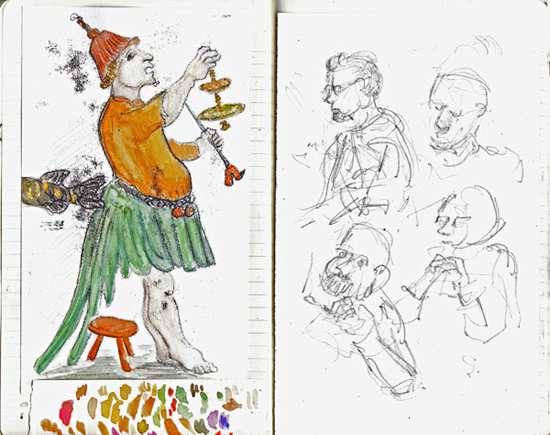
What is a Visual Diary/Journal?
• An exciting way to connect with your creativity on a regular basis.
• A personal space in which to create new or recycled images by experimenting with different techniques and materials.
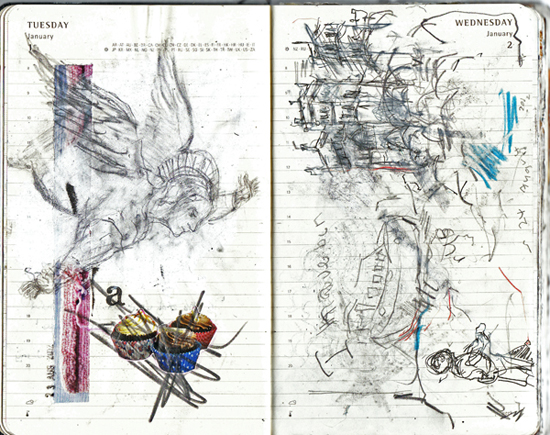
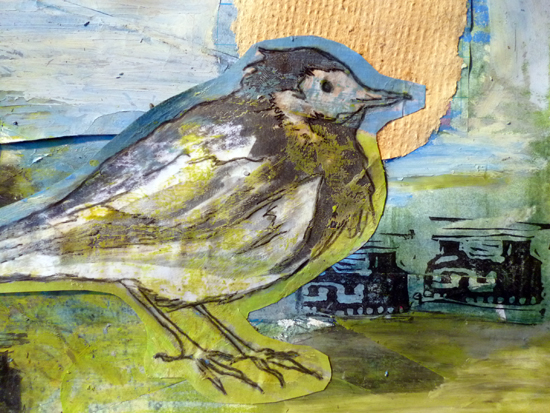
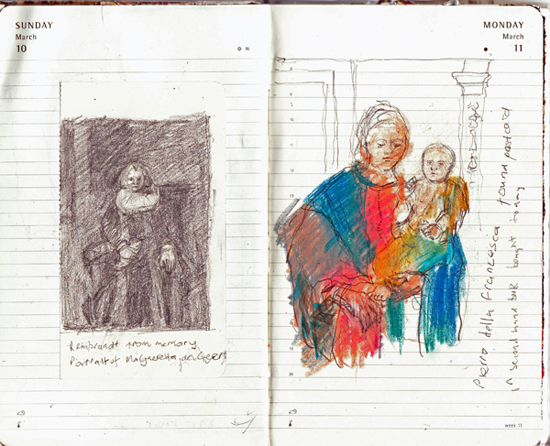
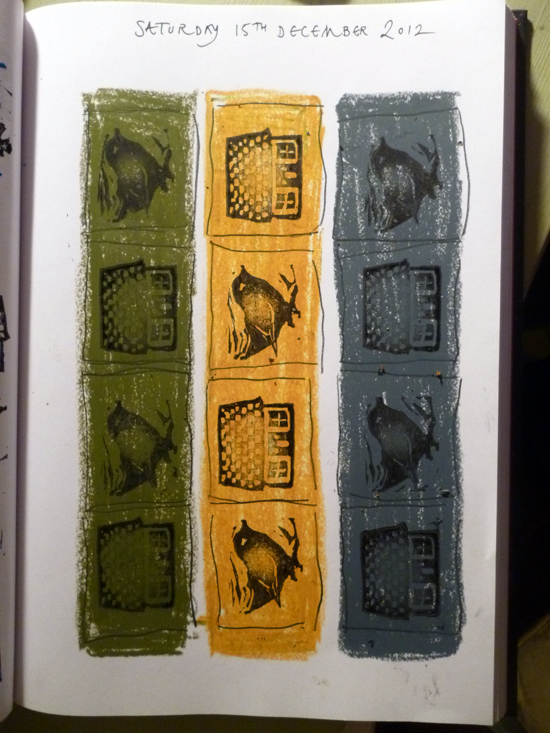
Your diary can contain a variety of images. You might draw something or someone that you have noticed in the world around you, or capture a feeling about your day, or a response to an event, or the image might be evolved from your imagination. In fact, anything goes, it’s your creative place and you can make up your own rules as to what’s included and how it’s presented!
The idea of keeping a visual diary first appeared on the Access Art website as part of the discussions of the new Tutorial Group. Andrea had been struggling to draw daily in a sketchbook, but after reading about the working methods of artists, including the designer Pep Carrio, completing an AccessArt online sketchbook course and discussing the problem with an artist friend, she realised that expanding the idea of ‘a drawing a day’ (as advised by all good drawing books and tutors), to the concept of ‘an image a day’ made all the difference to her thinking. It provided her with scope to widen her use of media to include collage, text and print as well as drawing and this finally motivated her to begin a daily visual diary.
Andrea comments: ‘By working in my journal daily, I have noticed a definite shift in the constancy of my creative thinking. I am beginning to explore personal interests with more focus, and I am making useful visual connections between past and present work.’
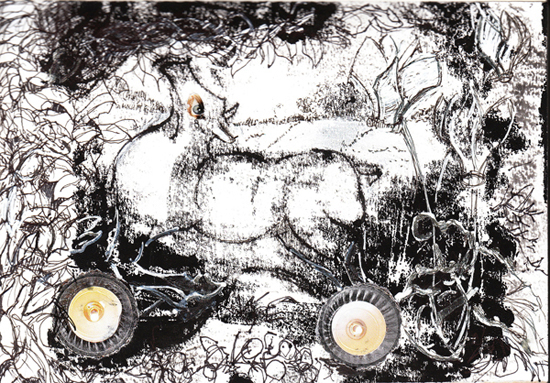
Fellow AccessArt member Morag took up the challenge to create her own visual diary in response to Andrea’s journal:
‘For me, the journey as a visual diarist has been an incredible one. I had completed the AccessArt online course 7 Steps to Drawing which had totally revitalised both my physical and mental approach to drawing, and was looking to take this further. When I first came across Andrea’s visual diary via the tutorial group, I jumped right in at the deep end! To me it made perfect sense and provided the routine and discipline I had needed so badly, and it has become an integral part of my day.
For someone like myself who was concerned about not doing enough drawing and had struggled to keep a daily sketchbook, the visual diary has given me the almighty push I so desperately needed and has exploded my creativity. It really does sharpen your focus and fires up your motivation and creative output’.
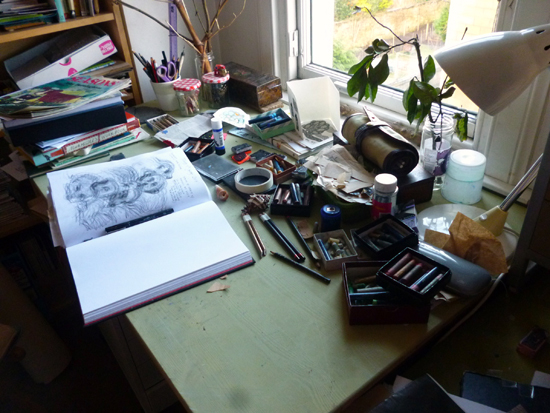
Suggestions for getting started:
• Choose the shape/size of book you’ll be most comfortable working with, such as a sketchbook, an inexpensive supermarket notebook, a diary or you could even make your own book to work in.
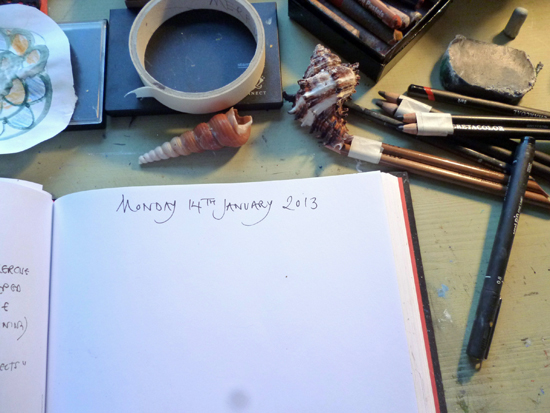
• If possible, stake out a space where you can keep your visual diary/materials readily available and where you can work without interruption.
• You may want to write/date stamp the date on the page – this kills the fear of making the first mark on a new sheet of pristine white paper and you might find it easier to begin your drawing. If you are working daily, writing the day’s date helps to keep the momentum going. Alternatively, if you don’t want to include the date, when a page is completed, draw a cross on a wall calendar as a visual marker of progress.
• Don’t force the drawing – don’t think about it too much. Let your hand go with the flow of your thoughts and see what emerges.
• Planning is an important part of keeping your diary going. If it’s difficult to find regular time for your diary, try and take a minute at the start of the day to decide when you will do your image. If you know you will only have a few minutes then plan what you will draw, how you will draw it and when you will draw – e.g. it might be a small, quick drawing on the train/bus home after a full day, but you will be more inclined to make the effort if you know that’s when you’ll do it!
• If you don’t want to carry your diary around, then take a selection of small pieces of paper with you to work on and then stick the image in your diary.
• If you are not happy with your creation, don’t be tempted to tear it out of the diary! Prepare a new quick version on a loose sheet of paper and partially stick it over the original image, so you’ll still have access to the original for future reference and consideration.
“The drawing needs time to ‘exist’ before it is understood’, Sheila Ceccarelli,
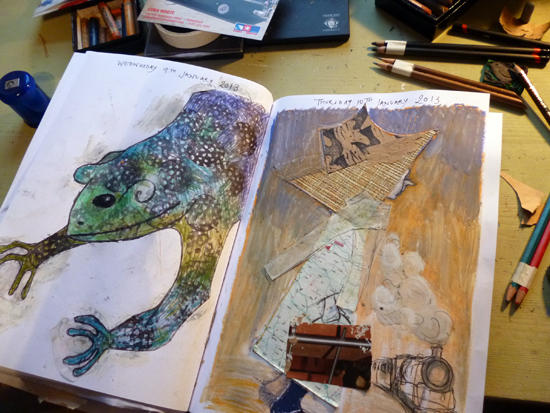
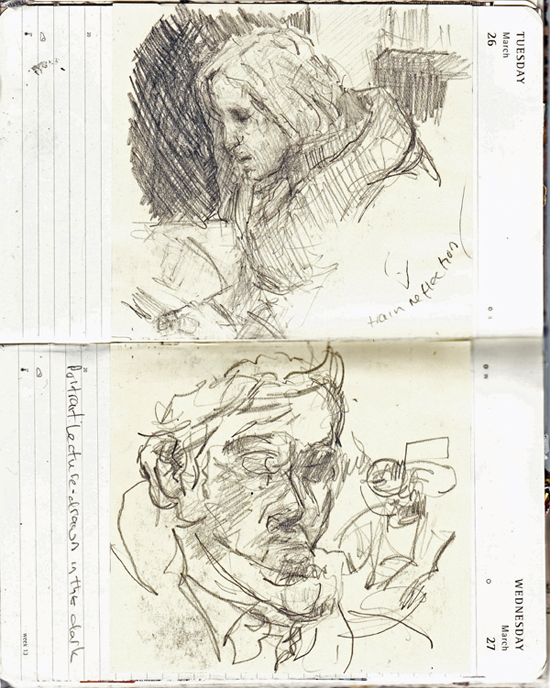
Here’s a collection of ideas as a resource for those more challenging days when a little inspiration/support might help!
• Use postcards/exhibition catalogues/books on art as a starting point for an image.
• Draw part of an image/object and then develop it using mixed media – be bold! For example, combine drawing with eraser prints and collage pieces. If you experiment you’re more likely to find your style or come up with a new one.
• Utilise old unused/unfinished drawings. Experiment and play! Use the whole drawing or cut bits out, increase/ reduce the size, exploring scale and composition.
• Try simple exercises in surface patterns, colour and design.
• Include words/symbols as part of the image.
• Create painted/printed/layered paper background surfaces on which to work.
• Draw an object then turn the page around to see if something unexpected is suggested, or lay down a random collage of papers, then see if you can develop an image using the patterns/shapes, (rather like finding images in clouds).
• For days when you have little time, keep a few small objects to hand from which you can make quick line drawings. Perhaps set a time limit for yourself e.g. one minute per object, or try drawing without looking at the paper. (Check out AccessArt Drawing Resources for further ideas).
• Make a drawing with marks that reflect how you feel e.g. what does a tired or nervous drawing look like? (Have a look at AccessArt link ‘Shy Drawings/Noisy Drawings’ for inspiration).
• Take two (or more) unrelated objects and make a drawing that combines them to make a new object.
• Make a drawing of an event/object from memory.
• Redraw a previous drawing then develop the image with other media.
• Draw from the TV/DVD – not as scary as it sounds! Because you are drawing at speed it will be a different sort of drawing but it does get easier with practice and you can always pause a DVD and draw if it’s all too much!
• Take yourself out of your comfort zone. For example, if you habitually draw figures but not animals, push yourself to do the latter. Get yourself a reference book from the library or check out the AccessArt resources for ideas.
• Upload your work to the visual diary Tutorial Group on a regular basis. The feedback will keep your motivation going. Also, keep checking the Visual Diary Tutorial Group Upload page to see the kind of work produced by other visual diarists to inspire you.
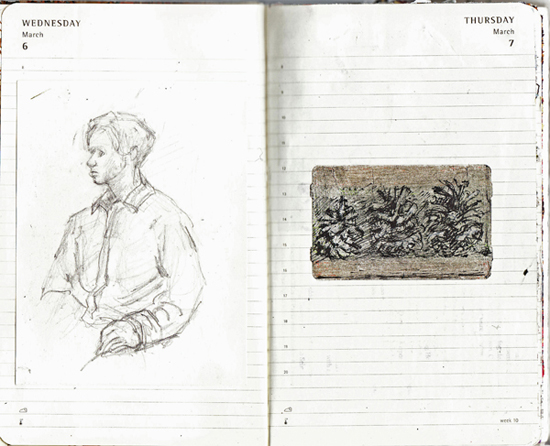
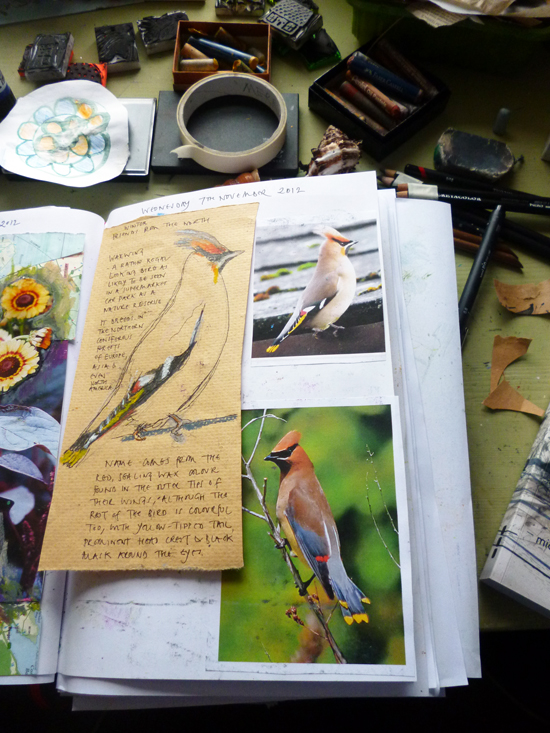
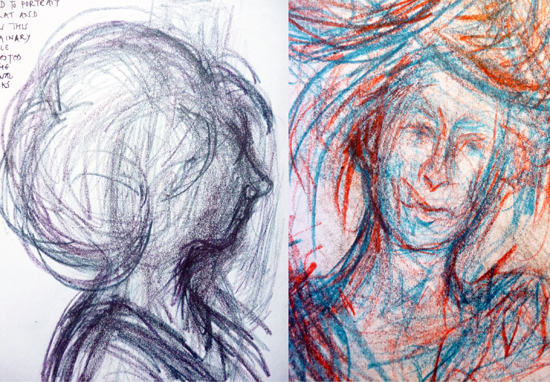
We hope very much that you will be encouraged to have a go keeping your own visual diary/journal. It would be wonderful if you were able to share images from your own visual diary with us and let us know of any techniques or ways of working that have been successful for you.
